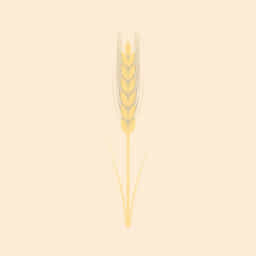Wheat is commonly recognized as a staple grain crop grown for producing flour and food products. However, its versatility extends far beyond grain production. In many agricultural systems, wheat also serves as an important source of forage for livestock. This dual-purpose role often leads to the question: is wheat a forage? The answer depends on how the crop is managed and utilized. When grown and harvested at certain stages, wheat can provide valuable forage through grazing, hay, or silage. Understanding its forage potential can help farmers make more strategic decisions for both livestock and crop production systems.
Understanding Forage and Its Role in Agriculture
Forage refers to plant material, primarily grasses and legumes, consumed by grazing animals. It includes pasture, hay, silage, and crop residues. Forages are crucial for providing energy, protein, and fiber to animals such as cattle, sheep, and goats. While traditional forages include alfalfa, clover, and perennial grasses, many cereal crops like wheat, oats, barley, and rye can also serve as seasonal forage options.
Characteristics of a Good Forage Crop
- High digestibility and nutrient content
- Rapid regrowth potential after grazing
- Tolerance to defoliation or cutting
- Adaptability to various climatic and soil conditions
- Palatability for livestock
Wheat meets several of these criteria, making it a viable forage under the right conditions.
How Wheat Functions as Forage
Wheat becomes forage when it is used to feed livestock in its vegetative stages or when the entire plant is harvested before full maturity. Farmers often utilize wheat forage in mixed crop-livestock systems, where flexibility and land-use efficiency are important. Its use as forage depends on whether the wheat is grown for dual-purpose (grain and forage) or forage-only production.
Grazing Wheat
Winter wheat is particularly suited for grazing in many temperate regions. It is sown in the fall, grows through the winter months, and can be grazed by cattle during its early vegetative stages. This practice is common in regions with mild winters, such as the southern United States or parts of Australia.
- Grazing Period: Typically begins when wheat reaches 6 to 8 inches in height.
- Animal Types: Cattle and sheep are most commonly used for grazing wheat.
- Grazing Benefits: Provides early-season forage when perennial pastures are dormant.
Harvesting Wheat for Hay or Silage
Another method of using wheat as forage involves harvesting it for hay or silage. Wheat hay is cut and dried when the crop is in the boot or milk stage, offering good nutritional value. For silage, wheat is typically harvested at the soft dough stage to maximize energy and protein content.
- Wheat Hay: Good fiber source and suitable for ruminants like dairy and beef cattle.
- Wheat Silage: Ensiled wheat can be stored and fed during dry or winter periods.
Nutritional Value of Wheat as Forage
The nutritional content of wheat forage varies depending on the growth stage at which it is grazed or harvested. In its early vegetative stage, wheat is high in protein and digestible energy. As the plant matures, fiber content increases while protein levels decline. This makes timing critical when planning to use wheat as a forage resource.
Typical Nutritional Composition
- Crude Protein: 14% to 22% in vegetative stage
- Total Digestible Nutrients (TDN): 60% to 70%
- Neutral Detergent Fiber (NDF): Increases with plant maturity
When fed to livestock, wheat forage can support moderate to high levels of animal performance if supplemented properly, especially during late gestation or lactation stages.
Advantages of Using Wheat as Forage
Integrating wheat into a forage system provides several agronomic and economic benefits, especially in mixed-farming systems.
Economic Flexibility
- Allows growers to switch between grazing and grain production depending on market or weather conditions
- Provides additional income through livestock or hay sales
Seasonal Feed Availability
- Extends grazing season in fall, winter, or early spring
- Reduces need for stored feed during off-season
Soil Health and Rotation Benefits
- Improves organic matter through root biomass
- Can help break pest or disease cycles when rotated with other crops
Challenges and Considerations
While wheat can serve as a valuable forage resource, there are certain management challenges to keep in mind.
Dual-Purpose Yield Trade-Off
Using wheat for both forage and grain can reduce final grain yield if not managed carefully. Grazing too late in the season or under wet soil conditions can damage the plant’s growing point and reduce recovery potential.
Nitrate Accumulation
Wheat can accumulate nitrates, especially under stress conditions such as drought or excessive nitrogen fertilization. High nitrate levels can be toxic to ruminants, so testing before feeding is advised.
Risk of Overgrazing
Allowing animals to graze for too long or too intensively can weaken the stand and reduce regrowth. Rotational grazing and rest periods are important for maintaining plant health.
Varieties Suitable for Forage
Some wheat varieties are bred specifically for forage production and offer improved regrowth and biomass yield. These varieties often have better resistance to grazing pressure and can be a better choice for forage-only systems.
Traits to Look For
- High tillering capacity
- Rapid early growth
- Cold and drought tolerance
- Good disease resistance
So, is wheat a forage? Yes when managed correctly, wheat can serve as a high-quality, flexible forage crop for livestock systems. Whether grazed directly, harvested for hay, or ensiled, wheat offers producers a way to bridge feed gaps, improve land-use efficiency, and diversify farm income. However, careful planning and management are necessary to balance forage use with grain goals and to avoid issues such as nitrate toxicity or overgrazing. For producers looking to maximize both crop and livestock productivity, wheat’s role as a dual-purpose crop is certainly worth considering.
